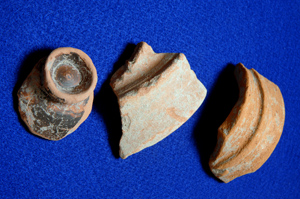|
||
      |
Original Source
Ancient Food Chain
 Each June Michael Dietler, associate professor of anthropology and the Committee on the Ancient Mediterranean World, looks forward to another trip to the warm coast of southern France. It isn’t vacation—it’s a research mission to Lattes, one of the area’s oldest and best-preserved archaeological sites, where he has spent the past 11 years studying ancient Mediterranean empires’ web of influences.
Each June Michael Dietler, associate professor of anthropology and the Committee on the Ancient Mediterranean World, looks forward to another trip to the warm coast of southern France. It isn’t vacation—it’s a research mission to Lattes, one of the area’s oldest and best-preserved archaeological sites, where he has spent the past 11 years studying ancient Mediterranean empires’ web of influences.
Dietler looks specifically at the archaeological remains of what early settlers ate and drank. Food and drink are “an indication of various colonial encounters,” says Dietler, adding that remnants of a wine trade suggest a more active interaction between Etruscan, Greek, Celtic, and Roman colonies than previously thought.
As a Celtic port town, Lattes spent the century from 125 to 25 B.C. importing millions of liters of wine from central and southern Italy. As evidence, Dietler points to sherds (pictured above) of wine-transport vessels and wine-drinking bowls, which he uncovered five years ago. Using X-ray technologies that revealed the sherds’ mineral makeup was characteristic of the Appenine Peninsula, he traced them to their Italian origins. “Food and drink often do have consequences that are geopolitical,” he says, referring to Lattes’s emergence as a trade center between local Celtic residents and Etruscan and Greek wine merchants.
Inhabited from the 6th century B.C. to the 2nd century A.D., the marshy, coastal town began slowly sinking almost as soon as it was settled. After it was abandoned, winds covered—and preserved—the site with soil. “We’re looking for very fine details of patterns of construction,” such as pottery remains, table settings, and silverware, says Dietler. The dig occupies an international team of about 60 researchers who sift through the settlements, religious sites, and burial grounds. “What I hope,” he says, “is that our findings help in building theories of colonialism itself.”